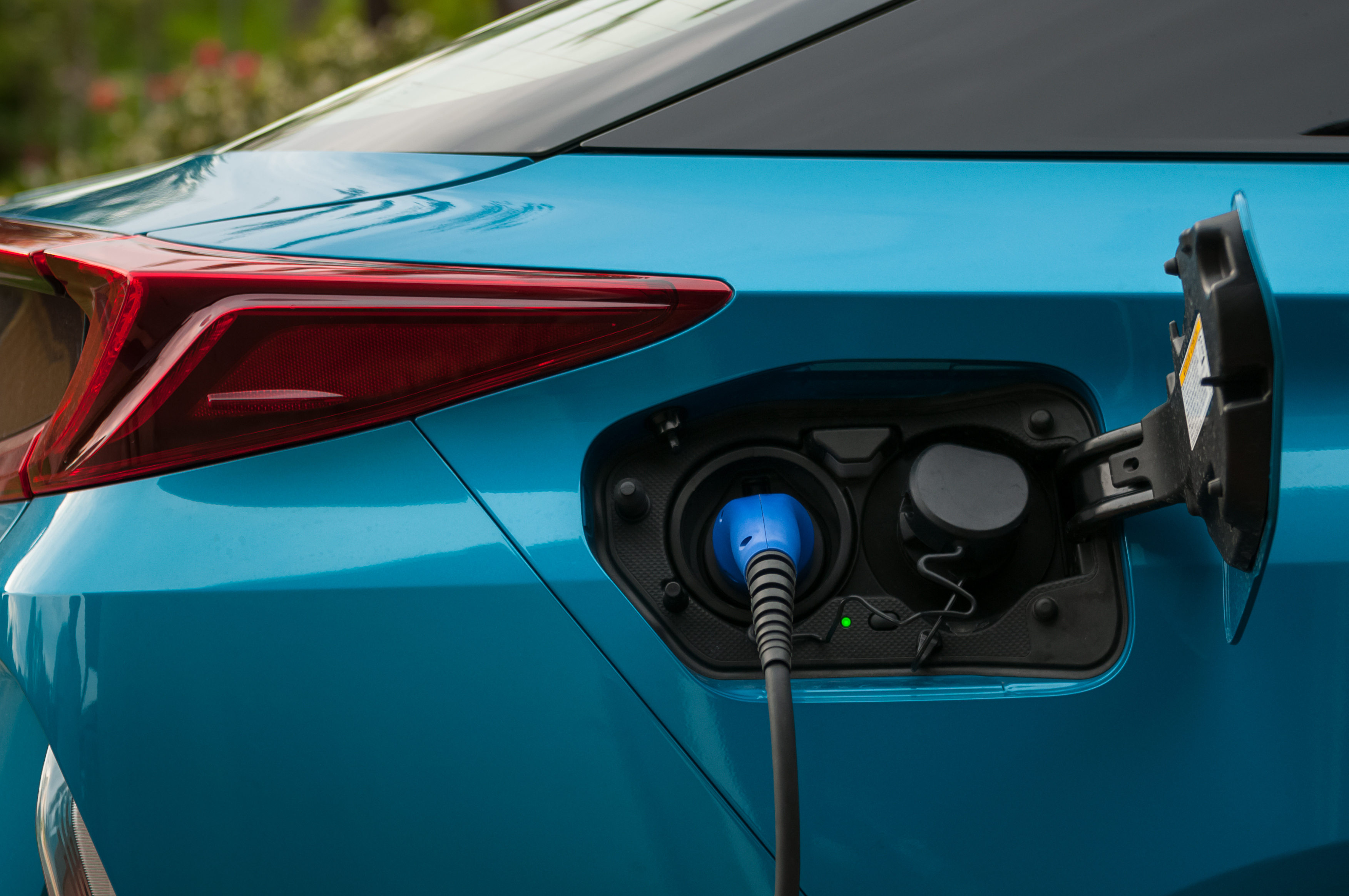Battery management system yields safer EVs
The rise of electric vehicles (EVs) highlight the challenges faced by large Lithium Ion batteries that need to operate efficiently in extreme and harsh environments, say Tamer Kira and Daniel Miller, Maxim Integrated
Industry experts anticipate that by 2025, 25% of cars sold will have electric engines. Various countries, battling pollution and the effects of climate change, are pushing this trend forward. China, which already buys half of the world’s electric cars, wants to have five million electric cars on its streets by 2020. India has vowed to sell electric cars only by 2030. In Europe, Britain and France have pledged to ban sales of new diesel and gas vehicles by 2040.
In response, vehicle manufacturers are re-envisioning how they are powering their cars. Volvo, for example, plans to have an electric motor in all of its cars by 2019. GM has announced plans to phase out gas-powered vehicles, producing 20 all-electric vehicles by 2023, while Ford has created a dedicated electric vehicle (EV) development team and pledged to invest $4.5 billion over five years on new all-electric and hybrid vehicles.
These changes are putting the spotlight on the large Lithium Ion battery packs that power electric, hybrid, and plug-in hybrid vehicles. These batteries must operate in a difficult environment, and be able to withstand potentially long periods of inactivity. The hundreds, or even thousands, of individual battery cells inside these packs must be precisely managed, and the voltages between cells must be carefully monitored and balanced.
Cell balancing
To promote a long lifecycle for Lithium Ion batteries, it is best not to charge any cell to 100% of its state of charge (SOC) as well as to not discharge it to 0% SOC, as both will degrade capacity. Accurately controlling the SOC for each cell helps to maximize battery pack capacity while minimizing degradation. Cell balancing is also essential – you want to be sure that the charge level of all of the cells stays within the recommended SOC range. It is also important to keep a close eye on battery temperature. All of this effort helps ensuresafe, efficient, and lasting vehicle operation, helping to extend battery life and vehicle driving range.
 Figure 1: Lithium Ion battery packs need to be precisely managed
Figure 1: Lithium Ion battery packs need to be precisely managed
What is an effective and efficient way to maintain a close watch on these battery packs? This is where a fast and accurate battery management system (BMS) makes a big difference. A BMS can monitor these areas and also provide real-time diagnostics to ensure proper operation of the BMS hardware and batteries. There are some key features to consider for an effective BMS to support an automotive application.
Key BMS functions
A BMS for a vehicle must meet demanding criteria, given that cars are considered harsh and sometimes unpredictable environments. Above all, it must work with high accuracy and in real-time in an environment where charging and discharging happens rapidly. It also must interface with various other in-vehicle systems. Battery specifications to be measured include voltage, temperature, and charging and discharging current, all of which will ultimately delivery accurate measurements of capacity. Key BMS functions include determining battery pack SOC and state of health (SOH) to provide accurate predictions of vehicle range and life expectancy.
Preventing conditions which can result in damage to the battery and safety concerns for the vehicle and its occupants, such as over-voltage, or charging at excessive currents, which is conducive to thermal runaway. To prevent under-voltage, a single over-discharge will not cause catastrophic failure, but will start to dissolve the anode conductor. Repeated over-discharge will lead to Lithium plating (from the recharging cell) and potential thermal runaway.
Over-temperature affects the cell electrolyte material, reducing the SOC. This condition can also increase solid electrolyte interphase (SEI) formation, resulting in increased and non-uniform resistivity and power loss.

Figure 2: Plug-in hybrid and electric counterparts rely on fast, accurate BMS
Another condition is under-temperature from the deposition of lithium, which results in loss of capacity. Over-current is internal heating due to uneven internal impedance and eventual thermal runaway. This condition can increase the solid electrolyte interphase (SEI) layers in the battery and increase resistivity.
Engine communications
A BMS typically consists of two main modules, a cell-monitoring controller (CMC) and a battery monitoring controller (BMC). Voltage and temperature data are reported to the BMC from the CMC. Communication of BMS summary data is performed by the BMC to the main vehicle electronic control unit (ECU) via a controlled area network (CAN) bus. Where the CMC and BMC are located depends on the application and on whether the system is distributed or centralised. A distributed system offers advantages including reduced or eliminated cell wiring, high accuracy, a common platform design for the hybrid, plug-in hybrid, and EV systems, and hot plug robustness. A centralised system reduces requirements on the communication interface as the communication cables are removed, optimises temperature sampling via the BMC, and offers potential thermal and cost optimisation benefits. On the other hand, the centralised approach has lower accuracy during balancing, is not scalable, and creates difficulties for wire harness routing through the battery pack.
Architectural choices
There are different BMS architecture types to consider. Based on a star configuration, an isolated CAN architecture provides a robust option. If there is a break in the communications wire in the isolated CAN architecture, this would disrupt only one IC. The rest of the battery pack would remain safe. The CAN architecture does have some drawbacks that are worth factoring in. It has high bill of materials (BoM) costs, needs a microprocessor and CAN for each IC, and provides relatively slow communications speeds.
A cost-effective option is the daisy-chain architecture. In particular, a UART daisy chain can deliver reliable and fast communication without the complexity of CAN. By not only eliminating expensive microcontroller and CAN physical layers, a UART daisy chain is robust in noisy environments, with capacitive isolation providing further system cost benefits (even over other distributed systems using transformers). A communications wire break in the daisy-chain architecture can disrupt communications, however, some systems do allow for various degrees of operation during the wire break as well as signaling of these conditions to avoid the system safety concerns. Yet another option combines a daisychain architecture with a fast successive approximation register (SAR) ADC, resulting in both fast and accurate battery system measurements.
The daisy chain plus SAR ADC architecture, available in Maxim’s MAX17843 12-channel, high-voltage smart sensor data acquisition interface, delivers reliable communications within any automotive specification for centralised as well as distributed architectures. This particular battery management IC provides differential UART communications, high noise immunity, capacitive and transformer isolation, and support for 100m long daisy chain segments. It also provides a single chip solution that achieves automotive safety integrity level (ASIL) D compliance. Defined by the ISO 26262 – Functional Safety for Road Vehicles standard, ASIL D represents the most stringent level. This IC allows engineers to replace the transformer with a capacitor to save up to 90% of isolation BoM costs. Aside from electric, hybrid, and plug-in vehicles, a BMS can also be integrated into applications such as 48V systems, electric bikes, battery-powered tools, battery back-up systems, and high voltage battery stacks.
As electric, hybrid, and plug-in hybrid vehicles become more prevalent around the world, the need to precisely manage their battery packs becomes more critical. A fast and accurate BMS can help extend battery life as well as vehicle driving range which can be combined with a choice of architectures. A daisy-chain architecture with a SAR ADC has demonstrated the ability to deliver the fast and accurate voltage measurements that are integral to safe, reliable performance of these vehicles.











